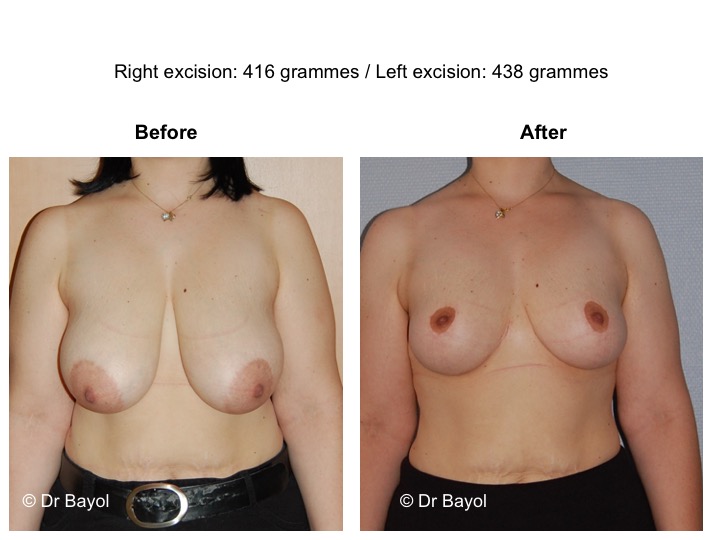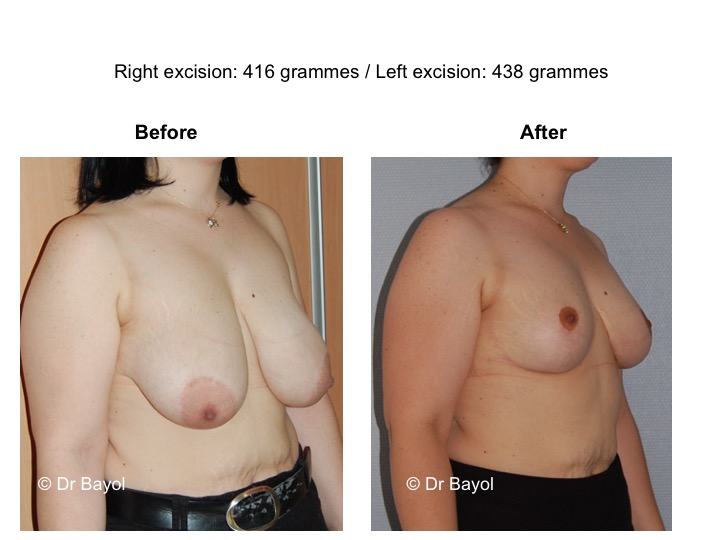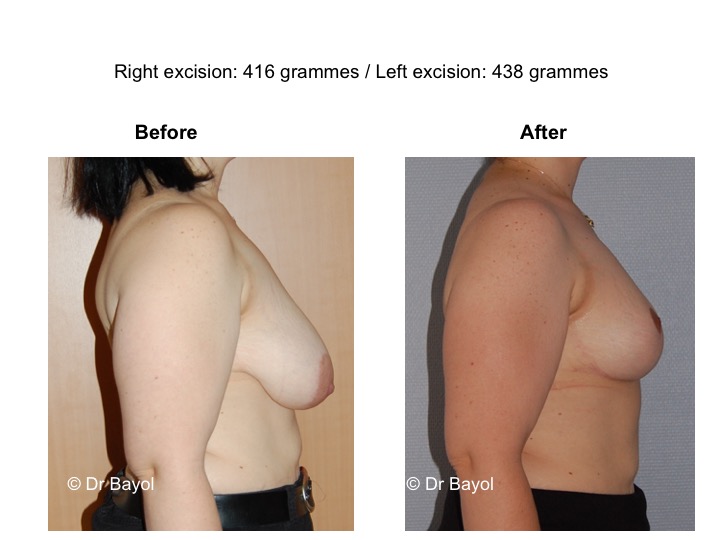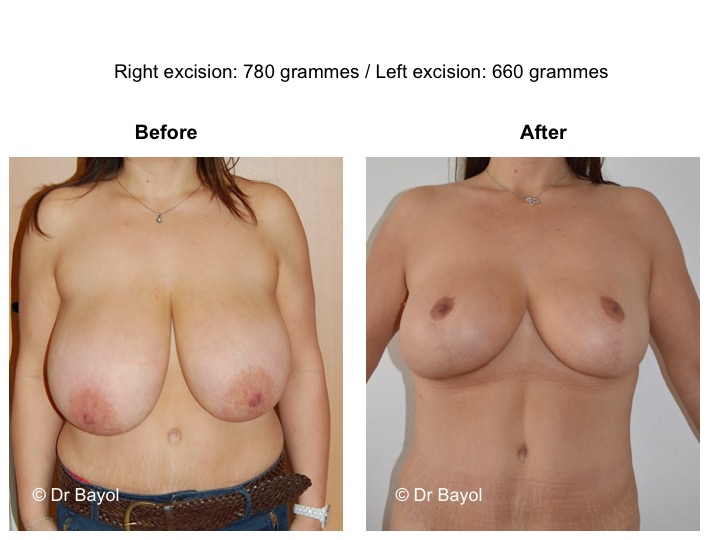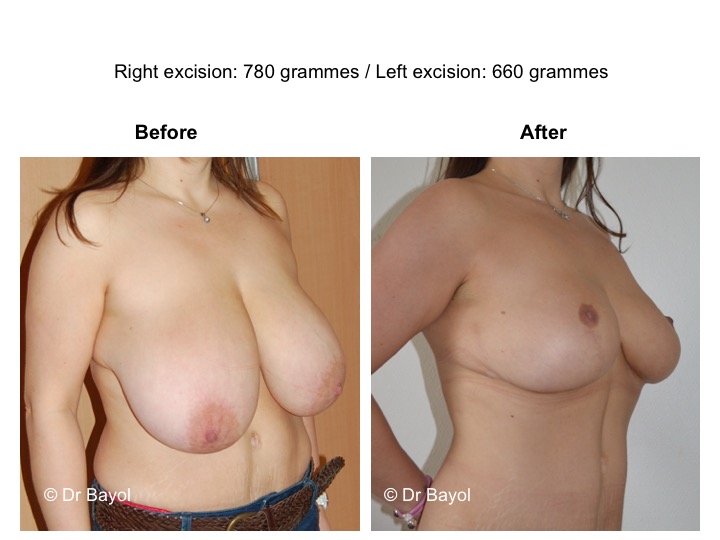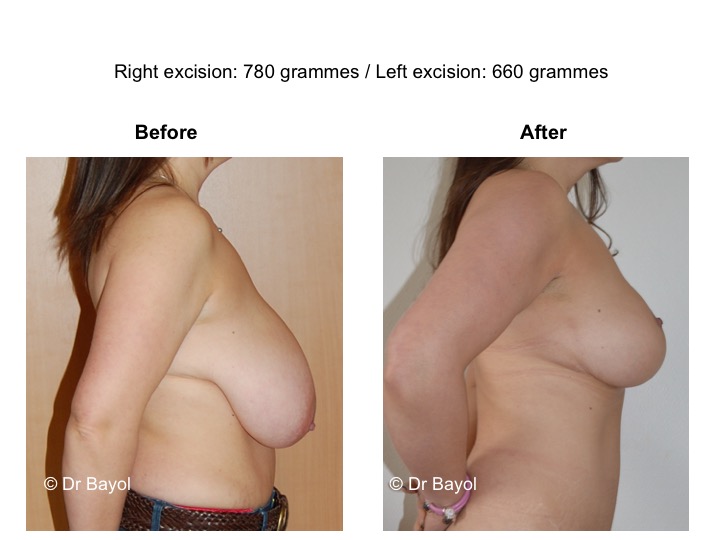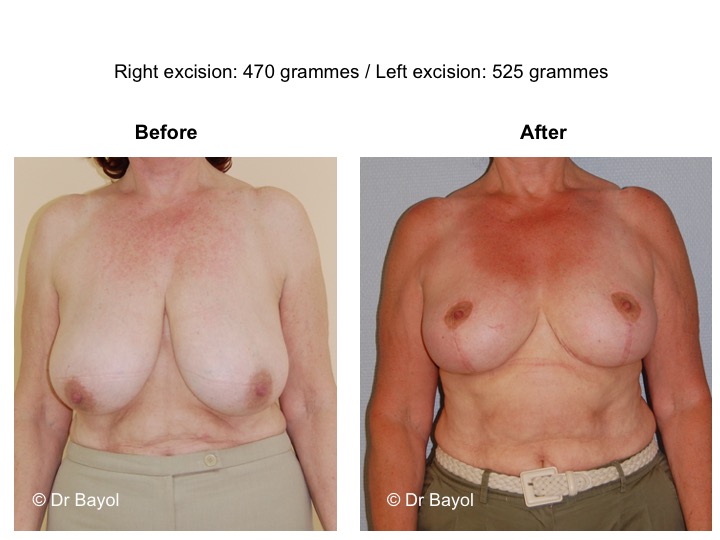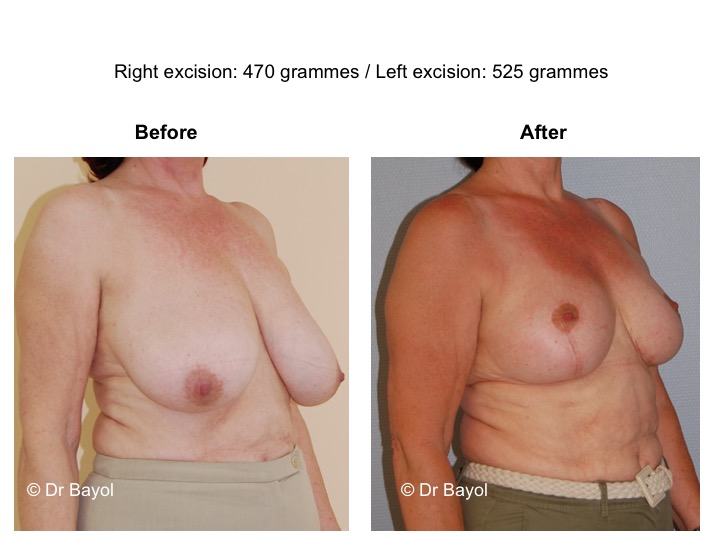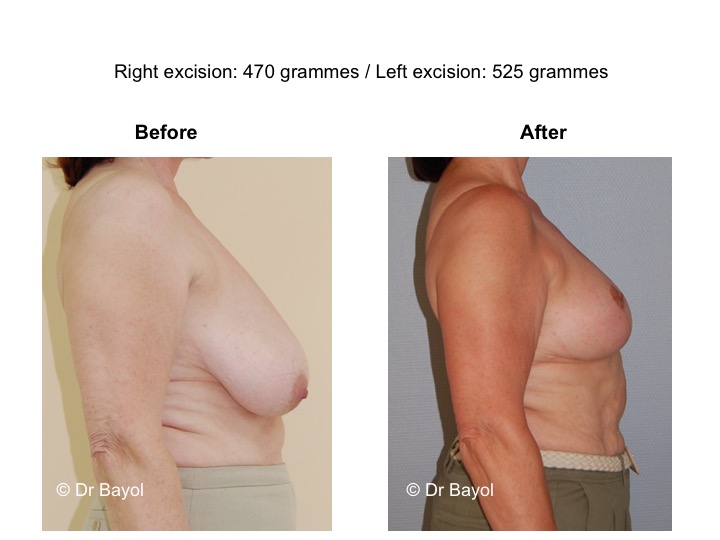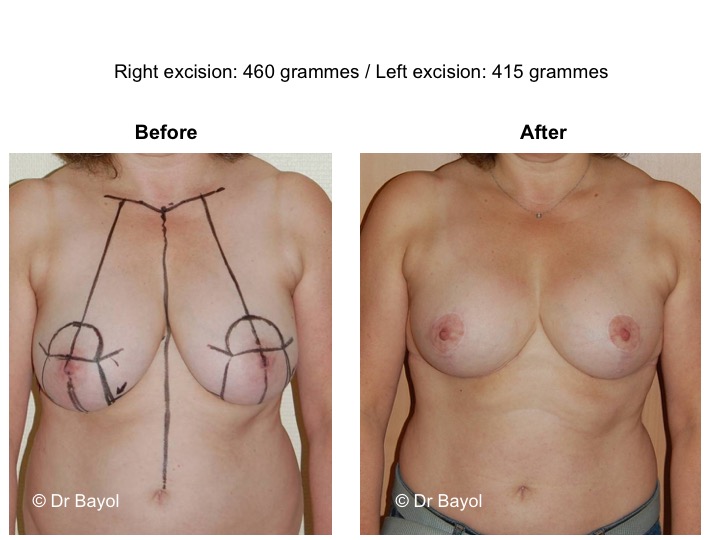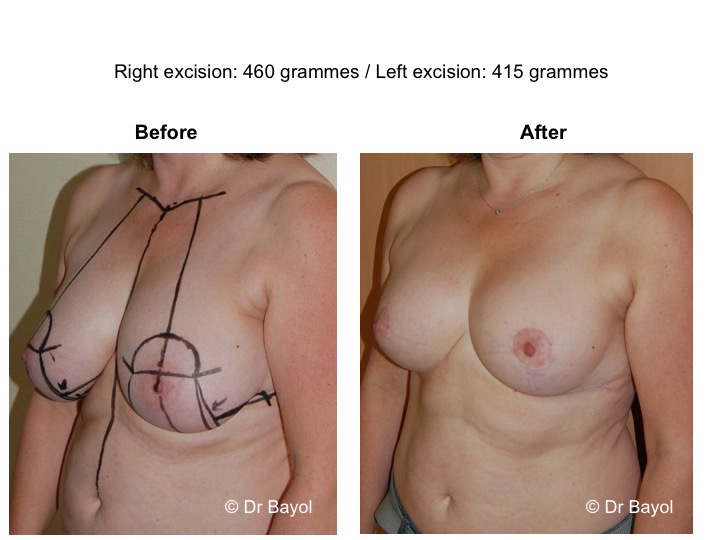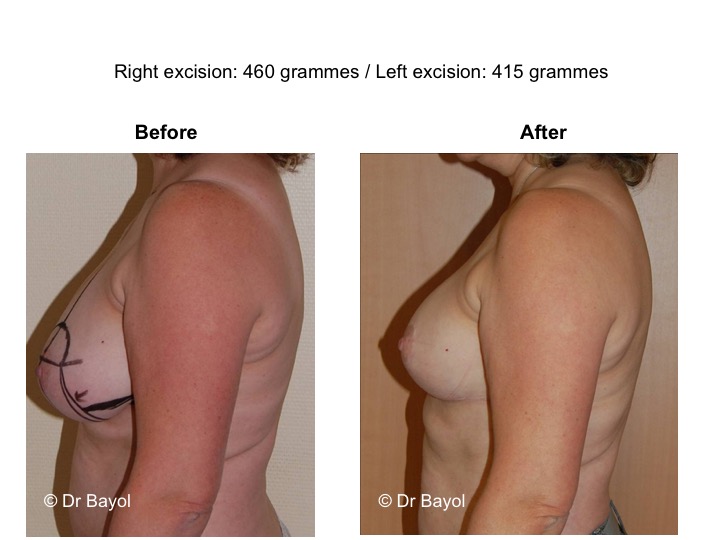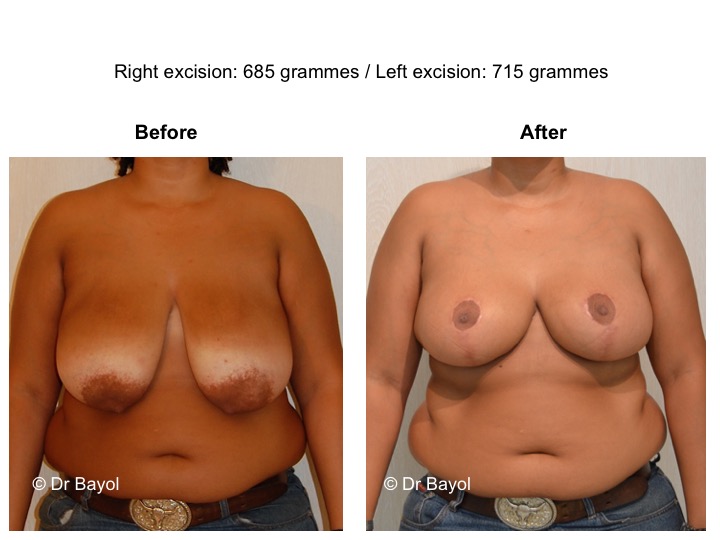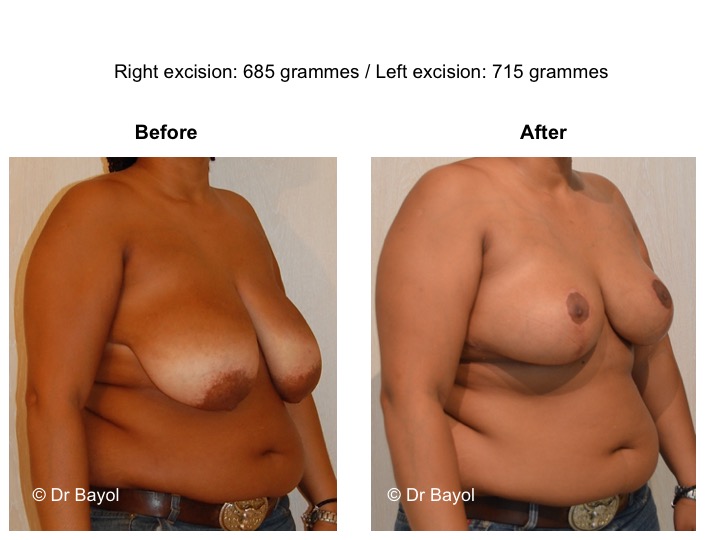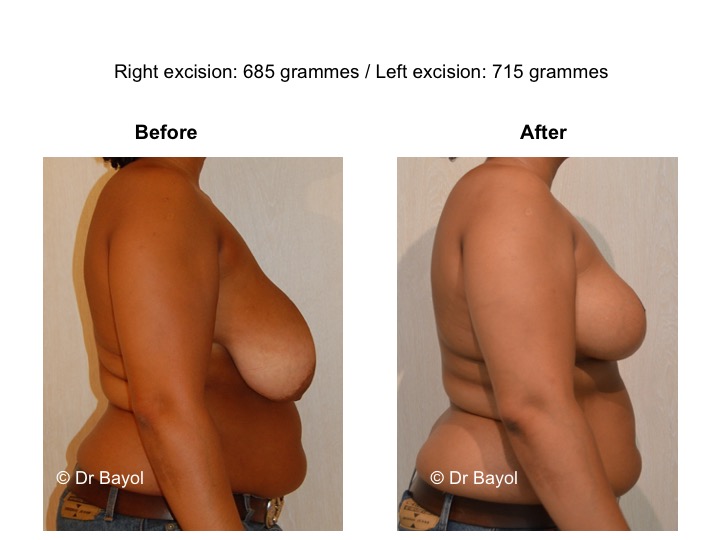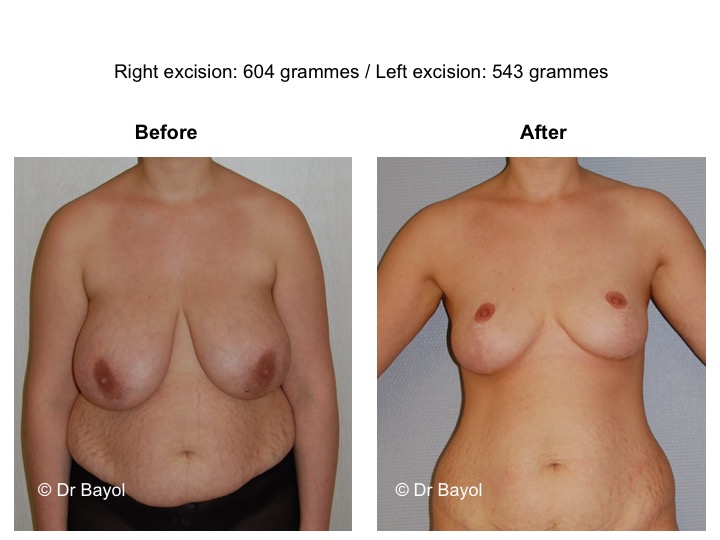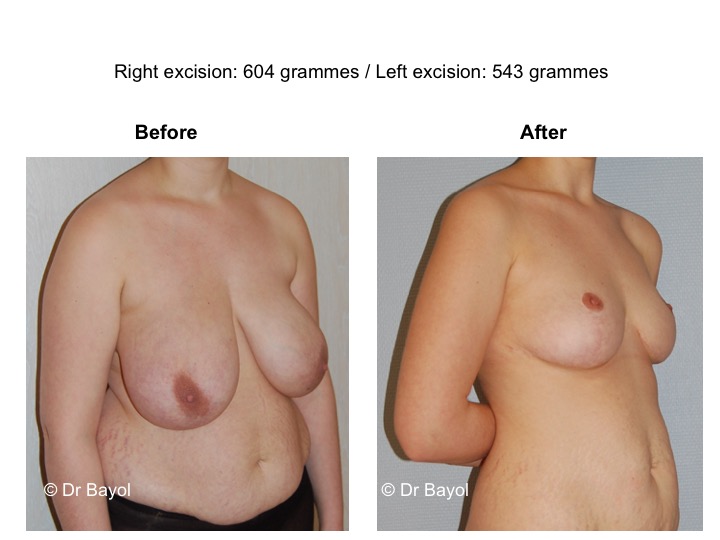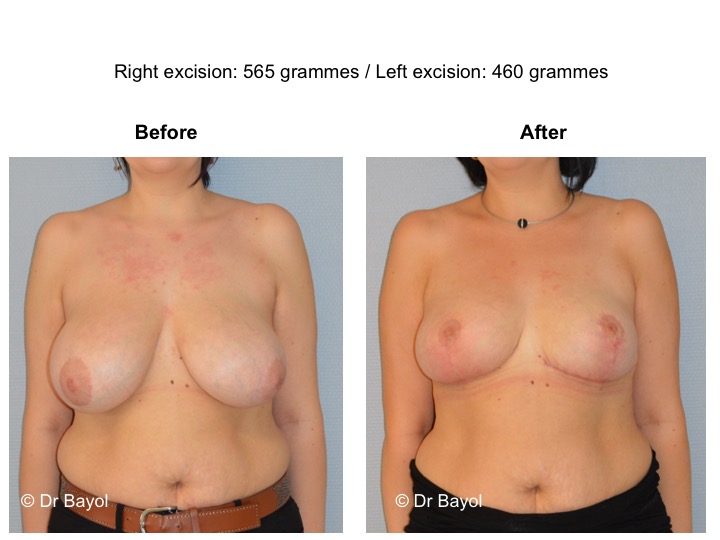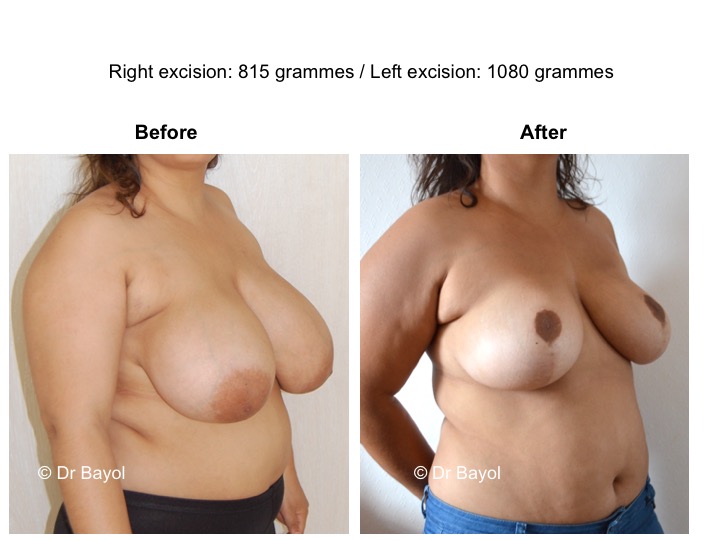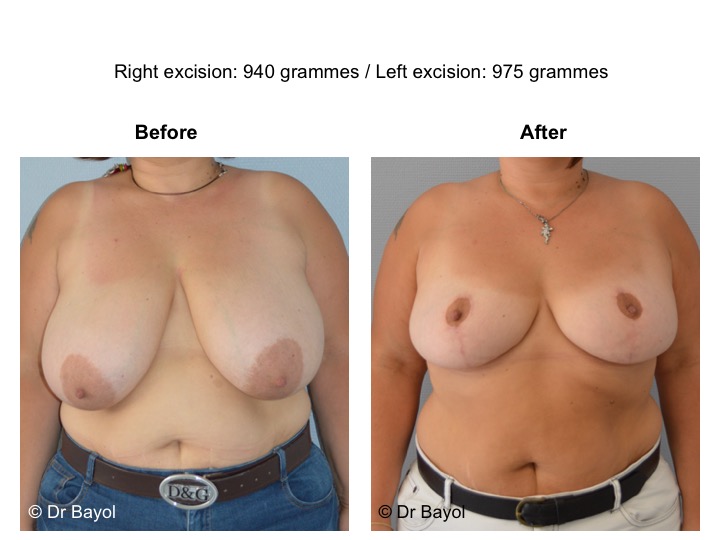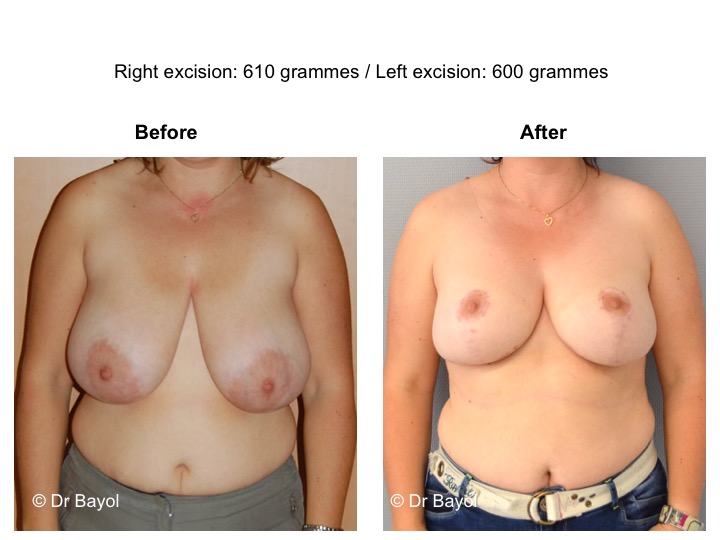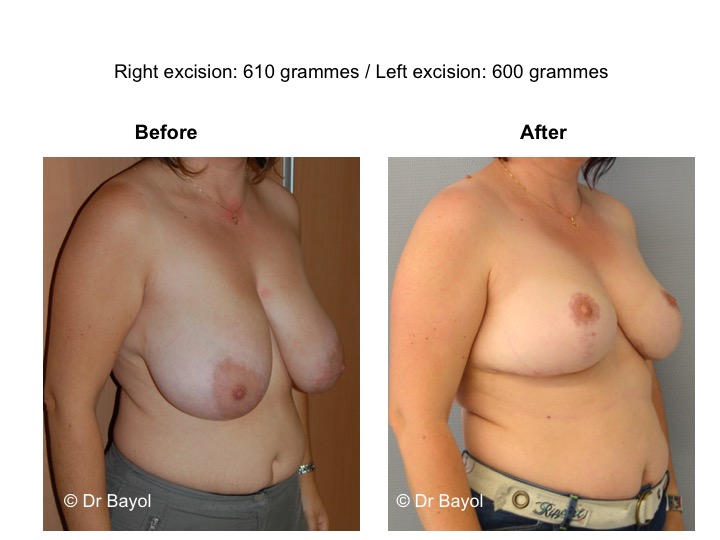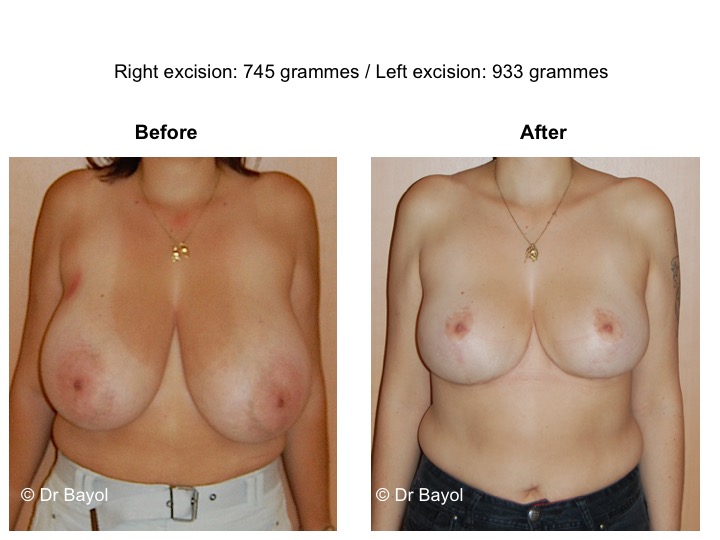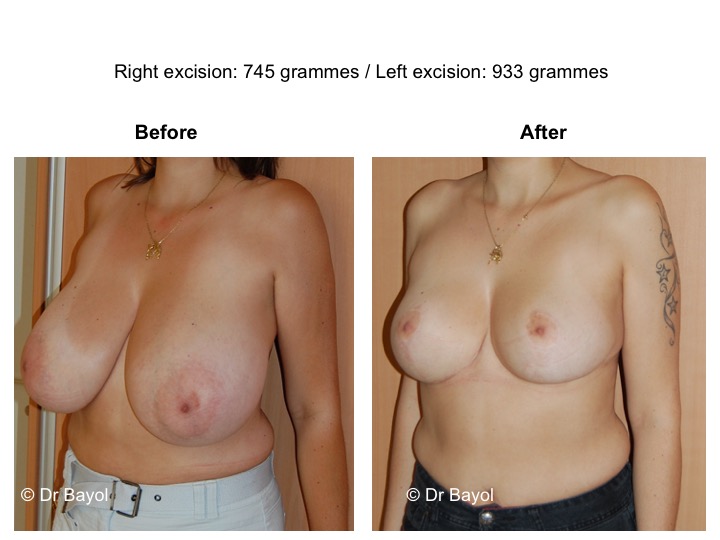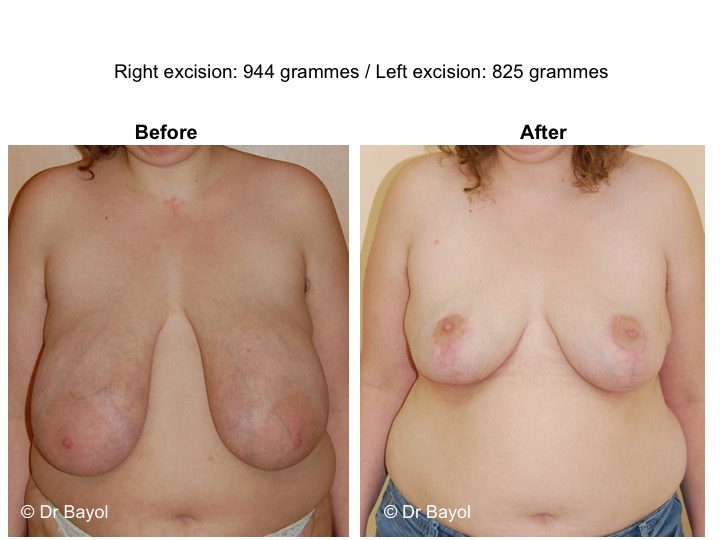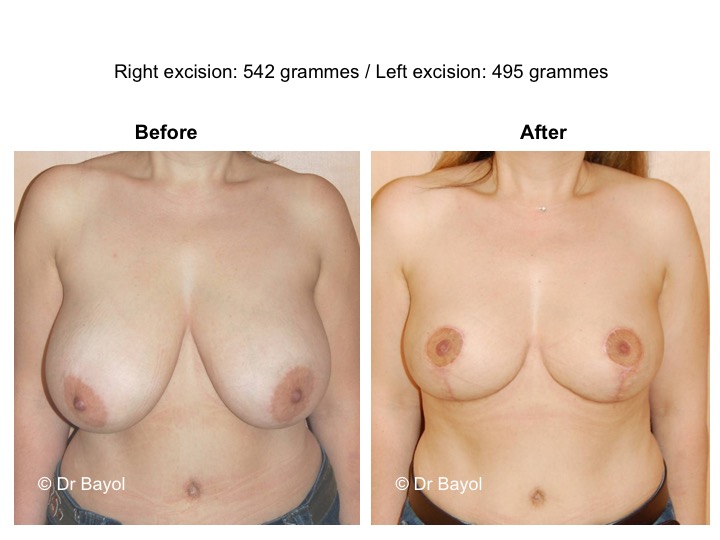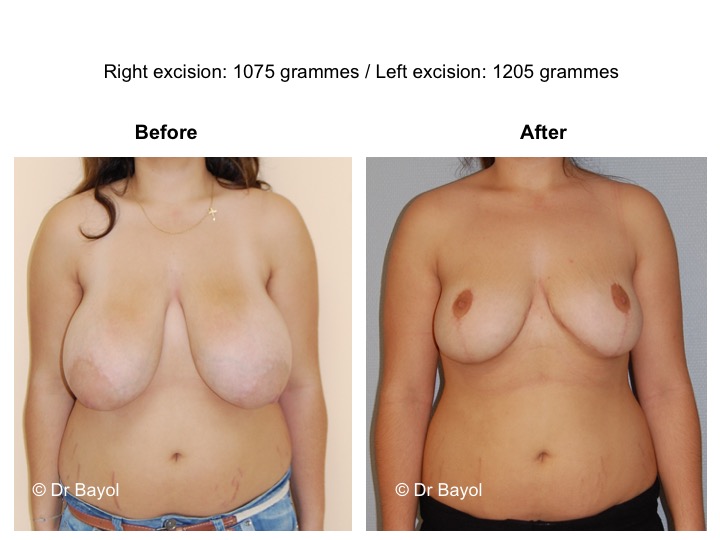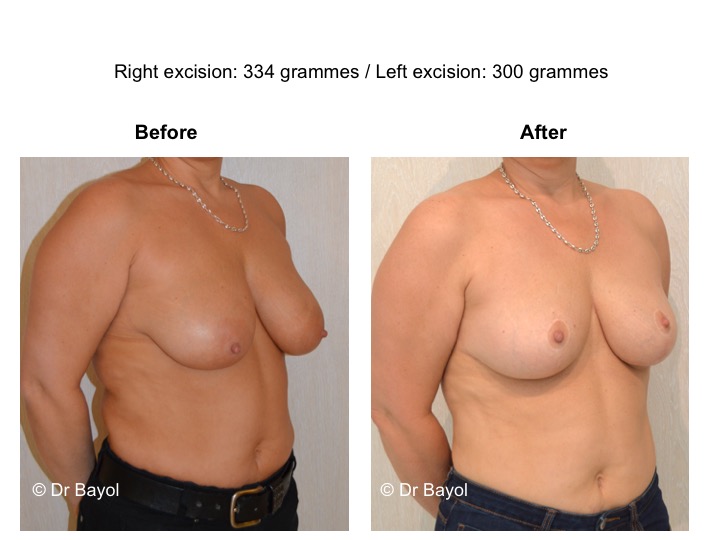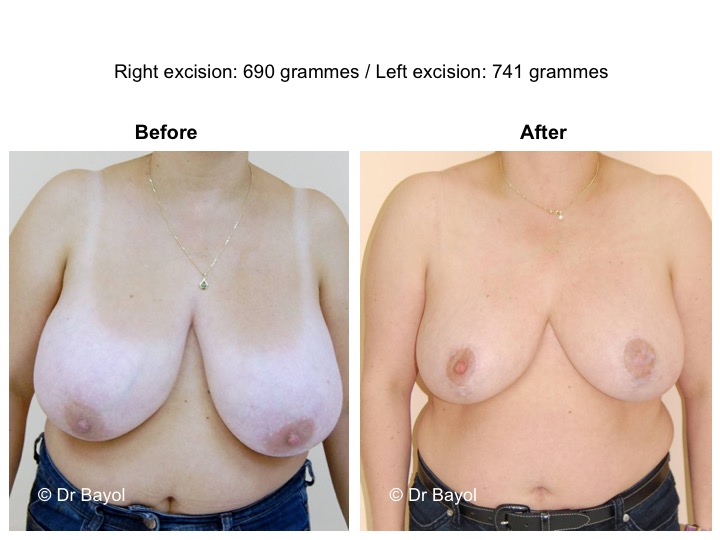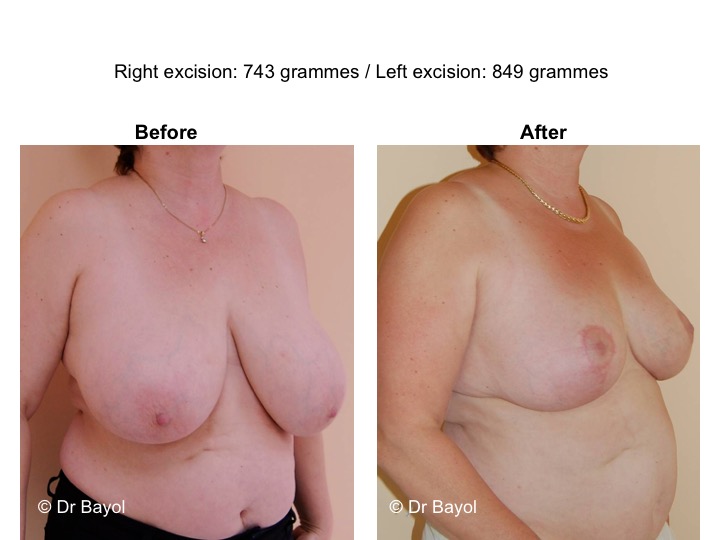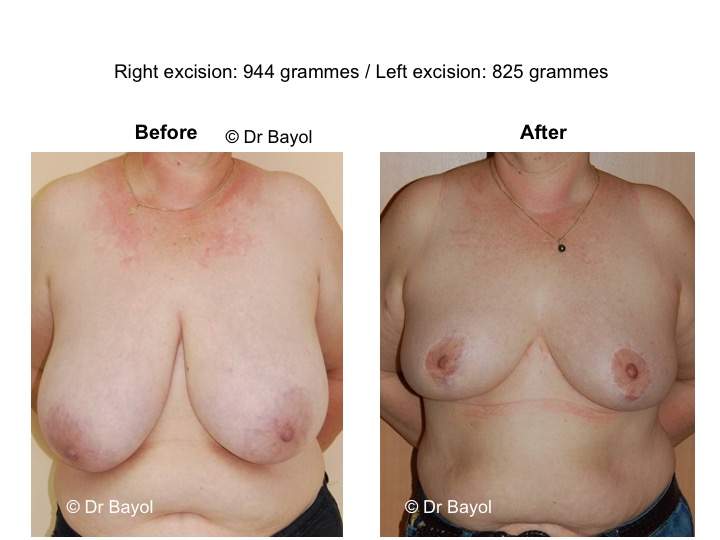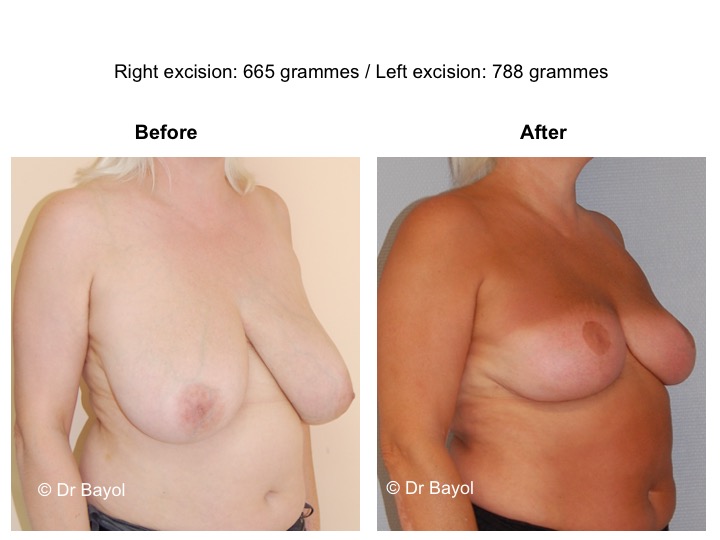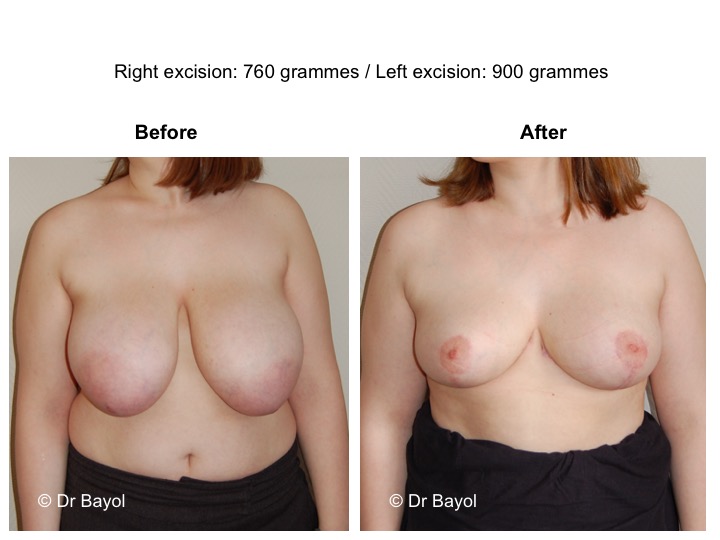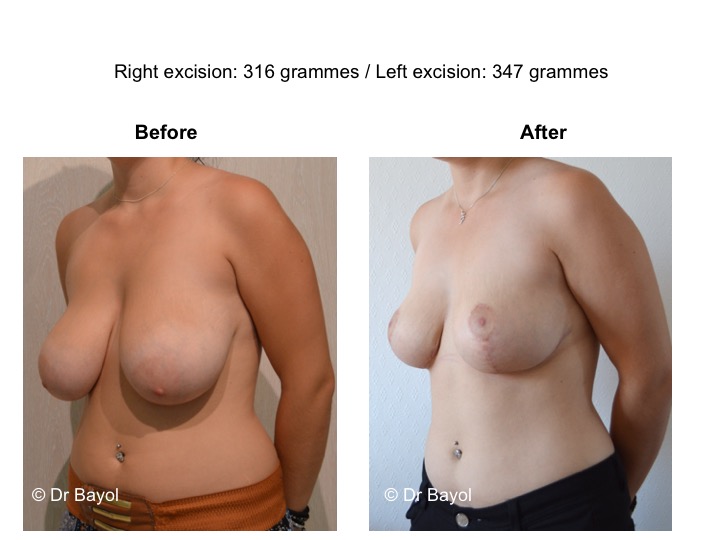The breast surgery aims to reposition the areola and remove the skin and glandular excess.
- To reposition the areola: An areola is normally located 17 to 19 cm from the clavicle, 9 to 10 cm from the body midline, and 4 to 6 cm from the fold under breast.
Before the procedure, the cosmetic surgeon will draw a cutting pattern on each breast with the position of the future areola and the excess skin and gland to be removed (Figure 1).
Figure 1: Aerola ideal position and preoperative drawings
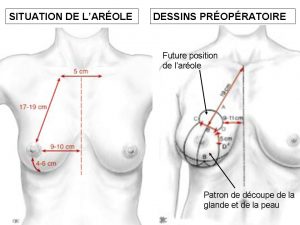
The first stage of surgery involves ascending the areola and reducing its diameter after making a mammary gland flap (Figure 2).
Figure 2: repositioning and reduction of the aerola diameter
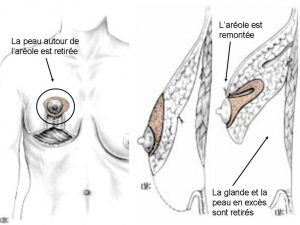
– Cutaneous and glandular excess removal:
After ascending the areola, the cosmetic surgeon removes the glandular excess (Figure 3). It will keep a volume harmoniously fitting the patient’s silhouette, conform to her desires. This residual glandular volume is ascended, concentrated and reshaped according to the preoperative design.
Figure 3: Reduction of the skin and glandular excess
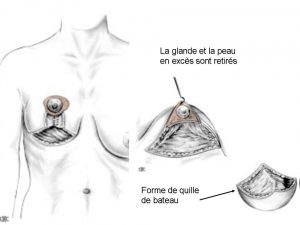
It is then necessary to adapt the skin envelope, which requires removing the excess skin in order to ensure a good hold and a good shape to the new breast. The cut skin edges are then sutured: these sutures are at the origin of the scars (Figure 4).
Figure 4: Breast reduction scars
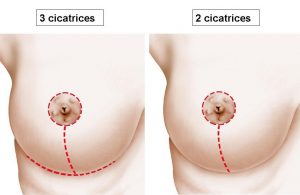
Often these scars have the shape of an inverted T with three components: peri-areolar around the areola between the brown and the white skin; vertical, between the lower pole of the areola and on the fold under the breast; horizontal, concealed in the fold under the breast.
The length of the horizontal scar is proportional to the extent of the hypertrophy and the breast ptosis.
Sometimes, especially when hypertrophy and ptosis are moderate, a so-called “vertical” method can be performed to eliminate the transverse scar in the fold under the breast and to reduce the scarring tissue to its peri-areolar and vertical components.
A breast enlargement for hypertrophy can be performed from the end of growth and beyond, throughout the patient lifetime.
A later pregnancy is of course possible as well as breastfeeding, but it is advisable to wait at least six months after surgery.
The breast surgery does not increase the occurrence of cancer.
Enregistrer
Enregistrer





